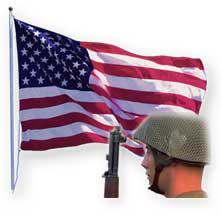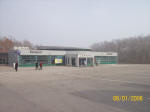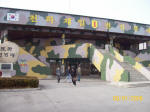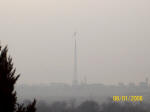|
We need your help to keep the KWE online. This website
runs on outdated technology. We need to migrate this website to a modern
platform, which also will be easier to navigate and maintain. If you value this resource and want to honor our veterans by keeping their stories online
in the future, please donate now.
For more information, click here.
|
|||||||||||||||
 |
|||||||||||||||
| Back to "Memoirs" Index page | |||||||||||||||
|
|
Zachary DentonMiddletown, Maryland - "The DMZ trip brought to life a war that for many of us young soldiers exists only in history books and black and white documentaries." - Zachary Denton <------ NOTE: picture size MAX 248 width... |
||||||||||||||
Memoir Contents:My DMZ TourThe Demilitarized Zone is a constant reminder of a conflict the world often refers to as the “Forgotten War”. It is the scar of a country that was once united, but torn apart as a result of political differences and Cold War influences. A war that resulted in 1.5 million casualties, 400,000 dead, billions of dollars spent, a country in turmoil, and a world that would spiral into paranoia and uncertainty. The Korean War’s impact on the world is often overlooked but nevertheless set the world stage for the next fifty years. As I walked to and from the different historical sights during our battery’s DMZ tour, these sobering facts became alarmingly real. The tour began with a scenic four-hour bus ride through Korea’s country side. Our first destination was the Third Tunnel, a passage from North Korea to South Korea, running 1.1 miles long and 239 feet below the ground. This is just one of several tunnels that North Korean forces dug in order to carry out surprise attacks on South Korea. As we donned our hard hats and descended down into the tunnel I was immediately struck by the dense humidity. With water seeping from pipes and dripping from cave tops, we made our way to the demarcation line. The walls were blackened from North Korean attempts to disguise the tunnel for coal mining purposes. The closer we got to the demarcation zone the more it felt as if the walls were collapsing in on us. The tunnel became so narrow that for 200 meters I walked completely hunched over trying to avoid striking my head on the tunnel ceiling. When we finally reached the demarcation zone I was somewhat surprised at what I saw. The area was cordoned off with barbwire and the passage was barricaded with a large slab of concrete. A window about one foot by one foot was in the upper left corner of the barricade, allowing you to catch a glimpse of the other side; unfortunately it was too dark to see anything interesting. The tour guide informed us that the other side of the barricade was rigged with land mines and barb wire to prevent North Korean invaders. After this somewhat uncomforting fact, we made the hike back to the ramp and climbed up to the surface. Our next destination was the Dora Observatory located on Dorasan, or Mount Dora, on the 38th parallel. From the observatory we had the rare opportunity to see a North Korean propaganda village known as Peace Village on the north side, or Kijŏng-dong, and Propaganda Village on the south. We also saw several guard towers used to this day to keep a constant watch on South Korean activity. The Propaganda Village flaunts the world’s largest flag pole at 160 m due to what many call the “flagpole wars”. It was deemed this after Kijŏng-dong originally raised the flag only to have Daeseong Dong, located directly across from Kijŏng-dong in South Korea, extend their flag taller. Kijŏng-dong quickly raised their flag to ensure vertical prowess. It is unknown to this day whether or not North Korean villagers inhabit the village, but most believe that the village was built purely for propaganda purposes. The village exudes a very eerie feeling and has some strange tendencies as well. It is said that every night lights come on in the village in the exact same buildings at the exact same time. Our final stop was the Joint Security Area, or as known to Koreans, Panmunjom. The JSA is the only neutral area between North Korea and South Korea and is the location of diplomatic peace talks between the two sides. The JSA is also the site where many of the war’s most memorable events occurred. Most notably, the JSA was the site where the Korean Armistice Agreement was negotiated and signed on 27 July 1953. To this day Korean Guards on both sides stand at the position of attention competing in what seems like a staring match, displaying a show force to one another. ROK soldiers stand at the foot of each building with the wall bisecting their body. This is to display less of a target in the event that North Korean soldiers attempt an attack. Before we entered the JSA site itself, we were given explicit instructions on how to conduct ourselves while under observation of North Korean guards. All waving, hand motions, signaling, shouting, or any attempts to communicate with the North Koreans is strictly forbidden. We entered the JSA negotiations building and had the opportunity to take pictures with ROK soldiers standing guard. We were also able to cross over to the North Korean side reserving us the unique right to claim our visit to North Korea. The DMZ trip brought to life a war that for many of us young soldiers exists only in history books and black and white documentaries. Growing up my grandfather often told me stories of fighting in the Pacific during World War II and in Korea during the Korean War. Unfortunately, the Korean War is overlooked by many and seems to have been lost in the shadows of World War II and Vietnam. Nonetheless, those of us that had the opportunity to see the DMZ have a new perspective on how the current situation in Korea came to be and why we as American Soldiers are here today. |
|||||||||||||||
Photo Gallery(Click a picture for a larger view) |
|||||||||||||||
|
|||||||||||||||
 |
|||||||||||||||






